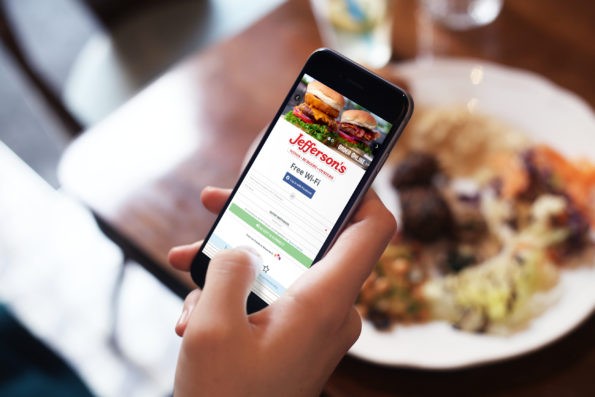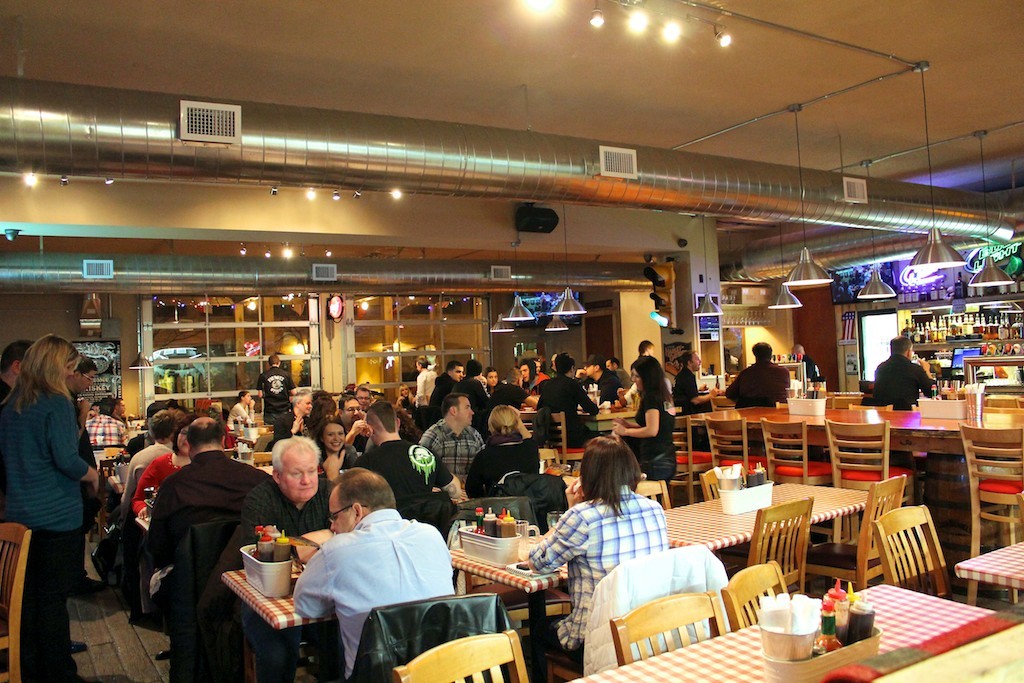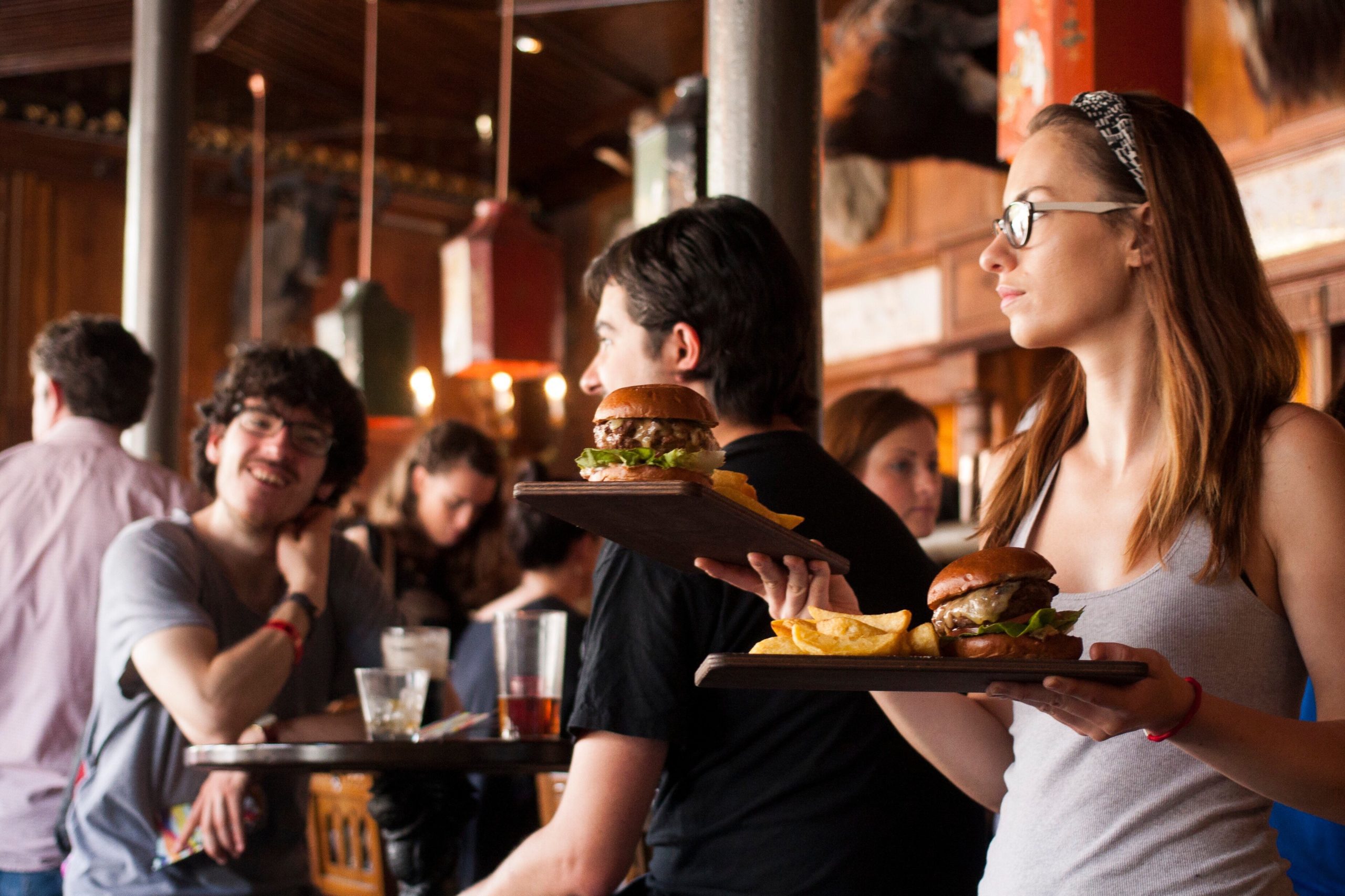While the significance of email marketing remains undeniable, savvy restaurateurs recognize that restaurant list building extends far beyond just collecting emails. Enter the era of SMS marketing, online advertising, and the power of a comprehensive customer database.
But why is there an increasing emphasis on expanding beyond traditional email lists?
The answer lies in the depth and breadth of guest insights that are now available. Collecting guest data from many sources offers a 360-degree view of your guests.
This isn’t merely about having names and contact details. It’s about building robust customer profiles. It’s about understanding dining preferences, frequency of visits, favored dishes, online and offline behaviors, and even special occasions celebrated at your establishment.
When leveraged correctly, these insights can pave the way for genuinely personalized messaging that improves engagement and maximizes profitability.
If you are concerned about dwindling consumer spending, the time to start is now. Why?
According to a study by Litmus, email marketing, on average, provides a $36 profit for every $1 spent. Of course, this will vary depending on the campaign, but email continues to provide fantastic ROI for restaurant marketers.
Moreover, email remains one of the least expensive forms of marketing available today.
Regarding SMS marketing, 51% of consumers tend to purchase when they get an SMS containing an advertisement, discount voucher, or QR code. SMS promotions with visuals and multimedia have better conversion rates. Moreover, 33% of consumers are indifferent to the type of SMS, provided its content resonates with their interests, according to the Attentive Mobile Consumer Report.
Imagine sending a tailored SMS offering a special discount on a diner’s favorite dish on their birthday or an online ad suggesting new menu items based on their previous orders. This level of customization not only boosts engagement but also significantly enhances the ROI for your marketing efforts.
For restaurateurs, the benefits are manifold. A comprehensive customer database becomes a goldmine of opportunities. It fosters loyalty, drives repeat business, and positions your establishment at the forefront of the customer’s mind.
In an industry where competition is fierce and customer preferences evolve rapidly, having this depth of insight can be the very edge that differentiates a thriving restaurant from a struggling one.
If you still rely solely on email marketing, it’s time to broaden your horizons. Dive into the world of holistic restaurant list building and discover the immense value it can bring to your establishment’s marketing endeavors.

Why List Building is Important to a Restaurant Success
Before diving into the various list-building methods, it’s crucial to grasp their inherent importance for businesses, particularly restaurants.
In an age where guest data is considered the new gold, restaurants have a unique opportunity to tap into an immense treasure trove of information. The secret? Collecting guest data from all the sources of your guest data to create rich, comprehensive customer profiles.
Every interaction, be it a reservation or order made online, a review, a login to your guest WiFi, or feedback given post-dining, can provide a unique data point. When combined, these data present a detailed picture of each guest, revealing not just their dining preferences but also their behavior, demographics, and means of communication, such as phone, email, and social media accounts.
But why is this level of detail so important?
With such an in-depth understanding of each guest, restaurants can tailor messaging to resonate deeply with individuals, ensuring that communications are not just seen but are also acted upon.
By addressing the specific tastes, past experiences, and preferences of a diner, restaurants can stand out among the noise of generic promotions and offers.
Moreover, this level of data enables intelligent segmentation. Imagine being able to group your guests based on specific behavior, like those who only visit at lunchtime, or demographics such as females over 21 years old. The possibilities are endless and, more importantly, effective and easy if you use the right tools.
The outcome? Higher engagement, loyalty, and a notable boost in ROI.
Constructing and meticulously maintaining a robust list of contacts offers many other advantages, including:
- Targeted Promotions and Announcements: A comprehensive list allows restaurants to fine-tune their marketing efforts. Instead of casting a wide and often ineffective net with generic advertisements, restaurants can design promotions that cater to specific segments of their audience.
- Direct Communication with Guests, Fostering Loyalty: A direct line of communication, such as an email, feels more personal than broad-spectrum advertisements. When guests receive messages directly in their inboxes, especially if they are tailored to their preferences, it establishes a sense of recognition and value. This direct engagement can significantly enhance customer loyalty, making patrons feel connected and valued by the establishment.
- Driving Traffic During Slow Periods Through Tailored Offers: Every restaurant faces off-peak times, weekday afternoons, or specific seasons. With a well-segmented list, restaurants can craft special offers targeted to encourage visits during these slower periods. For example, an exclusive weekday lunch deal can be promoted to lunchtime visitors, thereby boosting foot traffic whenever it’s typically low.
- Providing Insights into Guest Preferences and Behaviors: Beyond the immediate benefits of promotion and communication, a comprehensive list becomes a treasure trove of data. By analyzing order histories, engagement rates with past emails, and feedback, restaurants can glean valuable insights into what their patrons truly desire. This knowledge can guide menu alterations, event planning, and even operational changes, ensuring that the restaurant continually evolves in alignment with its patrons’ preferences.

Collecting Guest Information
In restaurant marketing, the depth and breadth of your guest data can substantially influence the effectiveness of your campaigns.
The more diverse and innovative your information-gathering techniques, the more enriched and holistic your database becomes. Here are some of the most potent avenues that restaurants can leverage:
- WiFi Logins: Offering complimentary WiFi has become almost a standard in many eateries, catering to the modern guest’s desire to stay connected. Capitalizing on this service, restaurants can request patrons to provide their email addresses or even log in using their social media accounts to access the WiFi. This strategy not only ensures the collection of genuine data but also integrates this collection process unobtrusively into a service that patrons readily utilize.
- Reservations: The reservation process, whether via a phone call or an online system, almost invariably requires patrons to furnish their email addresses or contact numbers. Such data is a trove of potential insights and opportunities. When this data from reservations is synergized with a robust customer relationship management (CRM) system, restaurants can track visit frequencies, preferred dining times, and even specific seating preferences, paving the way for hyper-personalized marketing strategies.
- Online Ordering: The surge in online food ordering, whether directly through a restaurant’s website or third-party aggregators, presents an unparalleled opportunity for data collection and online ordering marketing. Beyond the basic contact information, online ordering platforms often store a customer’s order history. This history provides insights into dietary preferences, favorite dishes, and spending habits – all invaluable data points for crafting bespoke promotions.
- Point of Sale (POS) Systems: The technological evolution of POS systems has transformed them from mere transactional tools to comprehensive data collection hubs. Modern POS systems have features prompting the staff to ask for an email address at checkout. Moreover, many of these systems can seamlessly integrate with other data repositories, ensuring a centralized and cohesive data collection mechanism.
- Websites: A restaurant’s website serves as its digital front porch and is often the first point of contact for many potential customers. Leveraging this platform, restaurants can entice visitors to subscribe to newsletters or sign up for special promotional offers. Utilizing strategically placed pop-ups or embedding sign-up forms at key website locations can exponentially increase the number of sign-ups, thus expanding the restaurant’s reach.
- Social Media: Your social media accounts are a powerful way to solicit more guest information. You can promote contests or raffles for free or advertise a special deal or perk exclusively for those who sign up.
- QR Codes: QR codes have skyrocketed in popularity. Place QR codes on your website or social media platforms or on tabletop tents. Have the codes lead patrons to a landing page where they can fill out a form to receive an offer, participate in a raffle for a prize, or join your loyalty program.
- Online Feedback Forms: Place a form on your website where guests can give feedback about their recent visit or online order. Link to the page from your website’s menu or home page, and promote it on social media. Not only will you be gathering even more guest data, but you will also be receiving authentic guest sentiment, allowing you to reinforce the good and take action on the bad. This will improve the guest experience, leading to higher lifetime values and more revenue.
- The Old-Fashioned Fishbowl: Place a fishbowl close to your entryway or POS where guests can drop in their business cards and then regularly draw one card for a special prize. At the end of each drawing, gather all the cards and enter the data into your customer database.
No matter which data collection methods you choose, remember that the more diverse your collection channels are, the more valuable and detailed information you can get from your guests. This will lead to much more personalized messaging, more engagement, happier patrons, and a higher ROI.
Having explored the various methods of collecting guest data, it’s essential to consider the next strategic step: streamlining and optimizing this process.
Enter the restaurant customer data platform. This powerful tool not only automates guest data collection but also aggregates guest behavior from these platforms, enabling restaurants to segment and personalize their audience.
With such capabilities at your fingertips, automating and enhancing your restaurant marketing becomes a seamless endeavor, ensuring you reach your patrons in the most effective and personalized manner.

Harnessing the Power of Restaurant Customer Data Platforms
As discussed above, restaurants can access a wealth of guest data from WiFi logins, reservation systems, loyalty programs, online ordering, social media, and more. However, managing data from these scattered platforms can be challenging. That’s where a restaurant customer data platform (CDP) comes into play.
A restaurant CDP collects and compiles guest data from various sources into one central database. This process makes handling data easier by removing the need for manual transfers, cutting down errors, and data cleaning, and can automatically segment your data into audiences.
With all your data in one place, restaurant owners can get a comprehensive view of each guest for much more effective and profitable marketing.
This centralized data helps restaurant owners dive into guest demographics and behavior. They can see which age groups visit the most, find out popular dish preferences, determine busy times, or measure the success of promotional campaigns.
Using these insights, restaurants can make smarter decisions to improve their service and offerings. In turn, the guest experience improves, leading to full seats, higher revenue, and a growing, thriving business.
One of the significant advantages of a CDP is creating detailed customer profiles. Each profile continuously updates with new data, giving a clear picture of each guest’s preferences and habits.
With all this data, restaurants can craft more personalized marketing campaigns. If they see a group of guests prefer only dining during dinner service, they can send out a tailored SMS or email about lunchtime menu items. Or, if they notice a trend of younger guests coming in for weekend brunches, they can advertise special brunch deals specifically for that age group.
Personalized messages based on these profiles stand out in our ad-saturated world. Research by SALESmanago indicates that 77% of marketing ROI is derived from campaigns that are segmented, targeted, and triggered.
When guests receive messages tailored to their likes, they feel a stronger connection to the restaurant. This tailored approach means that messages are more likely to get a positive response compared to generic messaging.
In short, a restaurant customer data platform isn’t just about collecting data. It’s about understanding guests on a deeper level, serving them better, and marketing to them in a way that builds strong, lasting relationships. By emphasizing individual customer profiles and the importance of personalized messages, restaurants can foster loyalty and keep guests coming back, even in uncertain economic times.
Segmenting Your Guest Data
After the effort of curating a rich and diverse list, the subsequent step that amplifies the value of this database is the process of customer segmentation.
By systematically categorizing your list into refined, targeted subsets, you can craft messages that not only reach the recipient but also strike a chord, evoking a genuine response.
Here’s a detailed breakdown of how to segment your guest database:
- Demographics: This is one of the foundational layers of segmentation. By categorizing your audience based on factors like age, gender, geographical location, and even their profession, you can tailor messages that align with their life stage and interests. For example, if you’re introducing a new family meal deal, targeting it towards individuals in their 30s or 40s, who are statistically more likely to have young children, can yield better results. Likewise, a late-night discount might appeal more to younger demographics, such as college students or young professionals.
- Order History: Delving into a customer’s past orders can provide a treasure trove of insights. By tracking patterns in order history, restaurants can discern specific preferences. Does a segment of your list predominantly order vegan dishes? Or do they have a penchant for spicy appetizers? Such granular insights allow for marketing campaigns that feel personal and attentive. For example, notifying gluten-intolerant customers about a new gluten-free dessert can lead to increased sales and customer appreciation.
- Visit Frequency: Understanding the frequency of visits or orders can aid in crafting loyalty-driven campaigns. For your regular patrons, those who frequent your establishment or order consistently, introducing a loyalty program or giving them early access to new dishes can strengthen the bond. On the other hand, those who haven’t visited in a while can be re-engaged with an irresistible comeback offer or a reminder of what they’ve been missing.
- Engagement Level: Beyond just sending out emails, monitoring how recipients engage with them can be revealing. By tracking who consistently opens, reads, and perhaps even shares your content, you can identify your most engaged customers. These individuals, being ardent fans of your brand, might be more receptive to exclusive previews, offers, or even behind-the-scenes glimpses into your restaurant’s operations, deepening their connection and commitment to your establishment.

Crafting Engaging Messages for Each Segment
Once you’ve segmented your data, the next step is to customize your messaging to align perfectly with each segment’s preferences and behaviors.
Here’s how you can enhance your communication:
- Personal Touches: Sometimes, it’s the small gestures that make the most significant impact. Personalizing your emails can drastically elevate their effectiveness. Incorporate elements like addressing the customer by their first name or mentioning their recent visit. Such personalization not only grabs the recipient’s attention but also fosters a sense of familiarity and appreciation, leading to enhanced engagement rates.
- Curated Offers: Based on the segmented data, you can craft offers that resonate with specific groups. For instance, if a portion of your list consistently chooses vegan or plant-based meals, introducing them to a new vegan entrée or offering a limited-time discount on vegan dishes can pique their interest and boost sales.
- Re-igniting the Spark with Re-engagement Campaigns: Every restaurant has customers who, for various reasons, drift away over time. Recognizing and addressing this, you can design campaigns specifically aimed at reigniting their interest. A heartfelt “We’ve missed seeing you!” message combined with a discount or special offer can be the nudge they need to revisit or place an order online.
- Celebrating Loyalty: Your regular patrons, the ones who’ve displayed consistent loyalty to your brand, deserve special attention. Recognize and reward their commitment by offering exclusive deals, sneak peeks at upcoming menu additions, or priority access to special events or themed nights. This not only strengthens their loyalty but also reinforces the idea that their patronage is valued and cherished.
In Summary, the essence of list building extends far beyond mere numbers. It’s not just about amassing a large list, but about cultivating a rich, insightful one.
Through diversified data collection methods, astute segmentation, and the crafting of precisely tailored messages, restaurants have the tools to launch email marketing campaigns that are not just far-reaching but deeply impactful.
The journey of perfecting this process is continuous, but with dedication and strategy, the payoff – in terms of engagement and revenue – can be immensely rewarding.

Discover Bloom Intelligence
Bloom Intelligence is an AI-powered restaurant marketing platform with a robust customer data platform, automated data collection, marketing automation, and reputation management tools.
Guest data is collected from many different sources and aggregated into one single platform, making it simple and easy to analyze and segment your restaurant’s guest personas for your restaurant email marketing.
Data is collected from WiFi logins, online reservation systems like OpenTable, online ordering platforms like Oracle’s GloriaFood or Toast, POS systems, website forms, and more.
Bloom makes guest data collection effortless, allowing you to quickly execute the abovementioned strategies, saving time, increasing customer lifetime values, attracting new guests, improving your reputation, and boosting your bottom line.
Click Here to Schedule a Free Online Demo, or call Click To Call 727-877-8181 to see how we can help you save time and drive tangible results for your restaurants.




.svg)